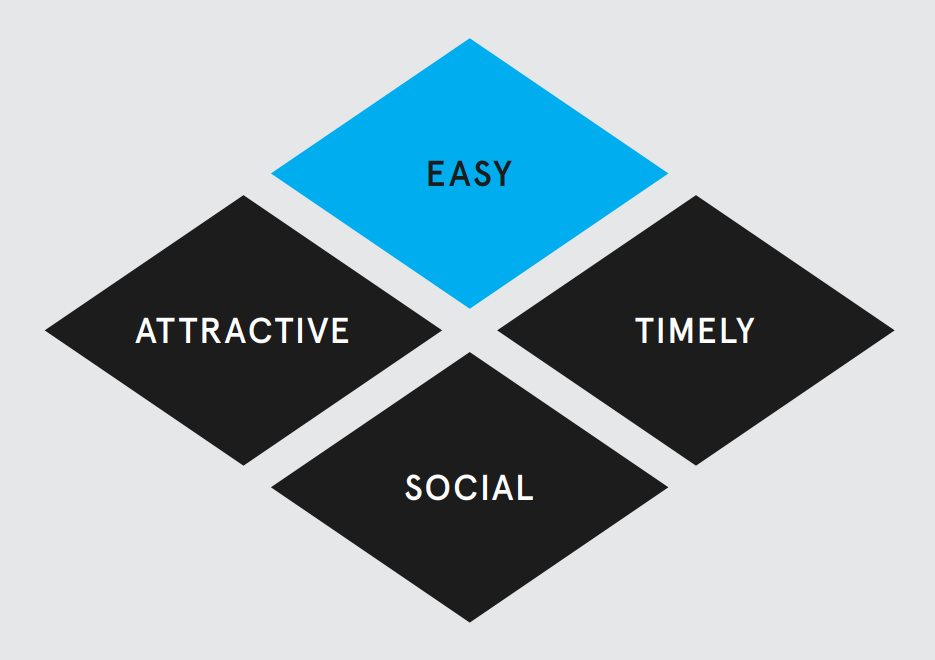The EAST Framework is an acronym that provides policymakers with an easy-to-follow outline for using Behavioural Insights to optimise their work and workplace policy.
Resource
The EAST Framework is an acronym that provides policymakers with an easy-to-follow outline for using Behavioural Insights to optimise their work and workplace policy.
 If you want to encourage a behaviour, make it Easy, Attractive, Social, and Timely (EAST). These four simple principles for applying behavioural insights are based on the Behavioural Insights Team’s own work and the wider academic literature.
If you want to encourage a behaviour, make it Easy, Attractive, Social, and Timely (EAST). These four simple principles for applying behavioural insights are based on the Behavioural Insights Team’s own work and the wider academic literature.
There is a large body of evidence on what influences behaviour, and the BIT has found that policymakers and practitioners find it useful to have a simple, memorable framework to think about effective behavioural approaches.
With this in mind, the principles from EAST are:
Designed to aid Local Authorities in developing robust, evidence-based plans to enable Net Zero.
Already have an account? Login